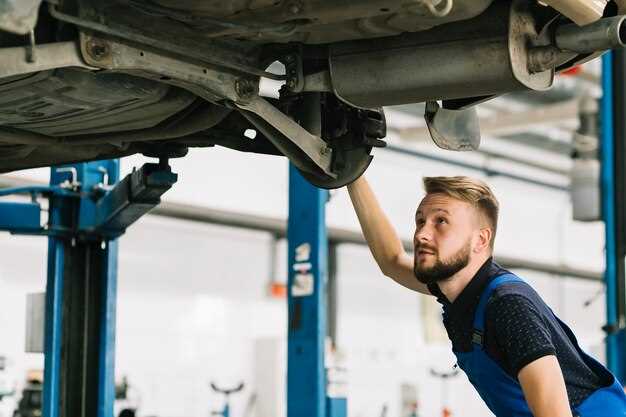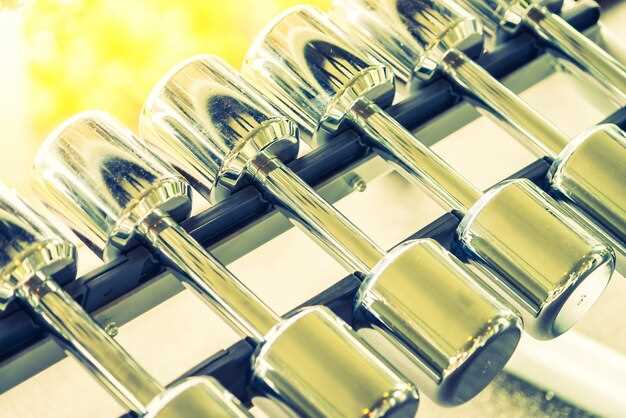The Role of Strut Bars and Chassis Bracing in Handling


Proper vehicle handling is crucial for both performance enthusiasts and everyday drivers, as it directly influences safety, control, and overall driving experience. Understanding the mechanics behind vehicle rigidity and stability can lead to significant improvements in handling characteristics. Strut bars and chassis bracing are essential components that play a pivotal role in enhancing a vehicle’s structural integrity, resulting in better alignment and responsiveness during various driving conditions.
Strut bars connect the strut towers across the engine bay, which helps to minimize lateral flex and improve suspension performance. This connection keeps the suspension geometry intact during aggressive maneuvers, allowing for more precise steering input. On the other hand, chassis bracing further complements this effect by reinforcing the vehicle’s overall structure, thereby enhancing the stiffness of the frame. A stiffer chassis translates to reduced body roll, improved tire contact with the road, and ultimately, a more engaging driving experience.
This article explores the various impacts of strut bars and chassis bracing on vehicle handling. By examining their designs, benefits, and practical applications, we aim to provide a comprehensive understanding of how these components contribute to enhanced performance. We will also look into specific vehicle dynamics and the measurable changes that can occur with the installation of these upgrades, employing real-world examples and expert insights to illustrate key points.
How Strut Bars Improve Suspension Geometry

Strut bars are engineered to enhance the rigidity of a vehicle’s chassis, which directly affects the suspension geometry. When a car experiences cornering forces, the chassis tends to flex, leading to unintended alignment changes. Strut bars mitigate this flex, maintaining the integrity of the suspension setup.
The primary function of strut bars is to connect the top strut mounts on either side of the vehicle, forming a triangle that stabilizes the upper section of the suspension components. By creating this connection, strut bars help ensure that both sides of the suspension react evenly when subjected to vertical loads or lateral forces.
Improved suspension geometry through strut bars offers several benefits:
| Benefit | Description |
|---|---|
| Reduced Body Roll | Strut bars minimize chassis flex, resulting in reduced body roll during cornering. This improvement enhances the vehicle’s handling characteristics. |
| Enhanced Steering Response | With improved rigidity, the steering response becomes more immediate and precise, allowing the driver to react quicker to changes in road conditions. |
| Consistent Alignment | Strut bars help maintain the suspension geometry, ensuring consistent wheel alignment. This consistency improves tire contact with the road, enhancing grip. |
| Improved Ride Quality | A more rigid chassis allows for better energy transfer through the suspension system, leading to enhanced ride quality even on rough surfaces. |
In summary, strut bars play a pivotal role in reinforcing the suspension framework of a vehicle. The reduction in chassis flex they provide contributes to improved handling, responsiveness, and overall driving experience.
Choosing the Right Chassis Bracing for Your Vehicle
When selecting chassis bracing for your vehicle, consider the specific handling characteristics you want to enhance. The primary types of bracing include strut bars, chassis braces, and anti-roll bars, each offering unique benefits.
Strut bars connect the top of the strut towers, minimizing flex during cornering. If you frequently drive on winding roads or participate in motorsport events, a strut bar can improve steering response and overall stability. Ensure compatibility with your vehicle’s suspension setup for optimal results.
Chassis braces are designed to reinforce various sections of the vehicle’s frame, such as the front and rear subframes. Look for braces that fit your application–some vehicles may benefit from a front lower brace, while others may require rear reinforcement. Consider lightweight materials like aluminum for improved performance without added weight.
Anti-roll bars, or sway bars, help reduce body roll during turns. Assess your driving style and the balance of your vehicle. A thicker anti-roll bar can improve cornering but may result in a stiffer ride. Finding the right balance between comfort and performance is key.
Evaluate the installation process, as some braces may require modifications or professional assistance. Research brands known for quality and reliability, as poorly constructed braces can lead to further handling issues. Additionally, consult forums or communities specific to your vehicle model for recommendations on the best options available.
Ultimately, the right chassis bracing can significantly enhance your vehicle’s handling capabilities. Analyze your driving needs and preferences to make an informed choice that complements your existing setup.
Comparison of Materials Used in Strut Bars and Their Performance
Strut bars are critical components in enhancing vehicle handling and stability. The choice of material used in their construction significantly affects performance characteristics. The most common materials for strut bars are steel, aluminum, and carbon fiber, each offering unique strengths and weaknesses.
Steel is the traditional material for strut bars and is known for its durability and strength. Steel strut bars typically provide excellent stiffness, which helps reduce chassis flex during cornering. However, they are heavier than other materials, which can negatively impact overall vehicle performance, especially when it comes to acceleration and handling responsiveness. For those focused on durability and cost-effectiveness, steel remains a solid choice.
Aluminum is a lighter alternative to steel, offering a good balance between weight and stiffness. Aluminum strut bars help improve handling without significantly increasing the overall weight of the vehicle. The reduced weight contributes to better acceleration and agility. However, aluminum can be less rigid than steel, which may result in some compromise in handling performance, especially under extreme conditions.
Carbon Fiber has emerged as a premium choice for high-performance applications. This material is exceptionally lightweight and offers superior stiffness compared to both steel and aluminum. Carbon fiber strut bars contribute to significant weight savings, enhancing handling and responsiveness. However, they come at a higher cost and may be more vulnerable to damage from impacts. For performance enthusiasts seeking the utmost in chassis rigidity with minimum weight, carbon fiber is the preferred option.
In summary, the choice of material for strut bars directly influences a vehicle’s handling and performance characteristics. Steel provides strength at a lower cost but adds weight, aluminum offers a good balance of stiffness and weight, while carbon fiber delivers top performance with a premium price tag. Ultimately, the selection depends on the performance goals and budget of the vehicle owner.
The Role of Strut Bars in Cornering Stability
Strut bars play a crucial role in enhancing the cornering stability of vehicles, particularly in performance-oriented settings. By connecting the two strut towers in the engine bay, strut bars improve the overall rigidity of the chassis. This increased stiffness helps maintain the proper alignment of the suspension components during cornering, reducing body flex.
When a vehicle enters a turn, forces act upon the suspension system, leading to potential changes in camber and toe settings. The presence of strut bars minimizes these changes by ensuring that the strut towers do not flex under load. As a result, the tires maintain better contact with the road surface, resulting in improved traction and response.
Additionally, strut bars effectively reduce the amount of body roll experienced during aggressive cornering. By providing a connection between the strut towers, they limit the independent movement of the suspension elements, leading to more predictable handling characteristics. This characteristic is essential for drivers seeking precise control while navigating tight corners.
Moreover, installing strut bars can enhance steering feedback. By maintaining the structural integrity of the chassis, drivers can experience a more direct and responsive steering feel. This feedback allows for better adjustments during high-speed maneuvers, ultimately improving driver confidence.
In summary, strut bars significantly contribute to cornering stability by enhancing chassis rigidity, minimizing body roll, and improving steering feedback. Their installation is a valuable modification for enthusiasts who prioritize handling performance and overall driving dynamics.
Installation Tips for Optimizing Chassis Bracing Efficiency
Proper installation of chassis braces can significantly enhance vehicle handling and stability. Follow these tips to ensure optimal performance from your chassis bracing system.
- Choose Quality Components: Select high-quality materials that can withstand stress and vibrations. Aluminum and steel offer robust options, with each providing different benefits in terms of weight and durability.
- Use Correct Tools: Ensure you have the right tools for installation, such as torque wrenches, ratchets, and adapters specific to your vehicle’s requirements. Having the proper tools will streamline the process and contribute to a better fit.
- Check Alignment: Before installation, verify that the vehicle’s alignment is correct. Misalignment can lead to uneven stress distribution and affect the braces’ effectiveness.
- Follow Manufacturer Instructions: Adhere strictly to the instructions provided by the manufacturer. Each brace may have specific requirements concerning fitment and torque specifications.
- Secure Proper Mounting Points: Identify and use the designated mounting points on the chassis. This ensures that braces are installed correctly, promoting improved structural integrity.
- Apply Anti-Seize Lubricant: Consider using anti-seize lubricant on bolts and mounting hardware to prevent corrosion and ease future removal. This is especially important in areas exposed to moisture and debris.
- Tighten Bolts Evenly: When securing braces, tighten bolts in a crisscross pattern to avoid warping. This ensures even pressure distribution across the chassis.
- Conduct Clearance Checks: After installation, make sure there’s adequate clearance around the braces and other components, such as suspension elements and the engine. Adjust as necessary.
- Test Drive and Evaluate: After installation, take the vehicle for a test drive to evaluate handling improvements. Pay attention to any unusual noises or vibrations, which could indicate improper installation.
- Inspect Regularly: Periodically check the condition of braces and mounting points over time. Look for signs of wear or loosening to maintain optimal performance.
By following these installation tips, you can maximize the benefits of chassis bracing. Properly installed braces enhance structural rigidity, leading to improved handling, cornering stability, and overall driving experience.
Common Myths About Strut Bars and Handling Dynamics
Strut bars and chassis bracing are often discussed in automotive circles, yet various misconceptions about their effectiveness and function persist. Understanding these myths is crucial for enthusiasts seeking to enhance their vehicle’s handling characteristics.
- Myth 1: Strut Bars Completely Eliminate Body Roll
Many believe that installing strut bars will entirely eliminate body roll during cornering. While strut bars can improve chassis stiffness and reduce some roll, they cannot completely negate the natural dynamics of a vehicle’s suspension. Other factors, such as shock absorber settings and suspension design, play significant roles in body roll.
- Myth 2: Strut Bars Are Only Useful for Track Cars
It’s a common misunderstanding that strut bars are only beneficial for high-performance vehicles intended for racing. In reality, any vehicle can experience improved handling stability with strut bars, enhancing both everyday driving and spirited cornering, regardless of whether it’s track-focused or not.
- Myth 3: Strut Bars Negatively Affect Ride Comfort
Some believe that installing strut bars will result in a stiffer ride and decreased comfort. In practice, while strut bars do stiffen the overall chassis, they can lead to more precise handling without significantly compromising ride quality. Proper installation and balance with suspension components are key factors in maintaining comfort.
- Myth 4: Any Strut Bar Will Suffice
Not all strut bars are created equal. The quality of materials and design can greatly influence their effectiveness. Investing in high-quality, vehicle-specific strut bars ensures a better fit and performance. Cheaper, generic solutions may not provide the desired benefits or could potentially weaken the structure.
- Myth 5: Strut Bars Solely Improve Steering Response
While better steering response is a common benefit, strut bars also impact overall handling dynamics, including corner stability and tire grip. They play a role in allowing the tires to maintain consistent contact with the road, contributing to better overall traction rather than exclusively enhancing steering feel.
In conclusion, debunking these myths about strut bars and handling dynamics aids vehicle owners in making informed modifications. Proper understanding ensures that enthusiasts can maximize the benefits of their upgrades while fostering realistic expectations about vehicle performance.
